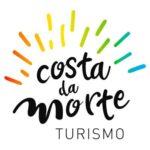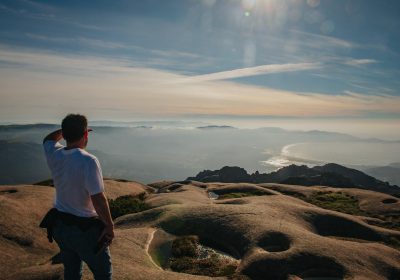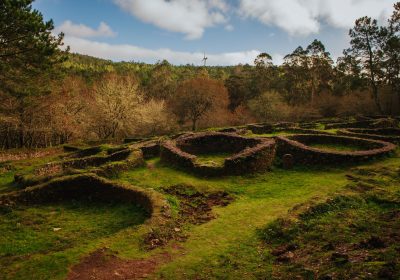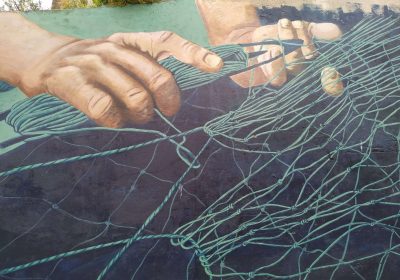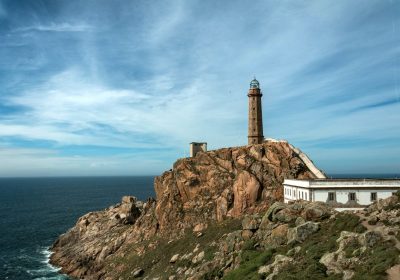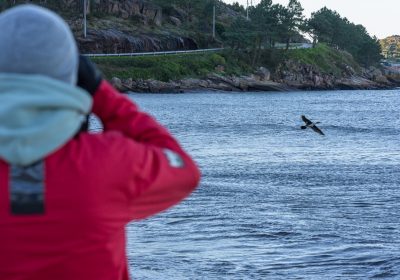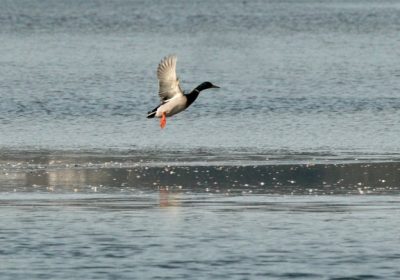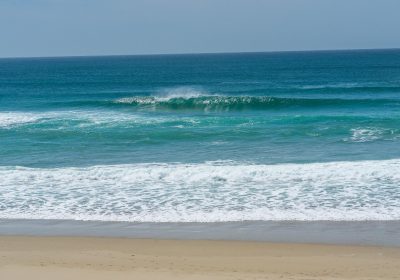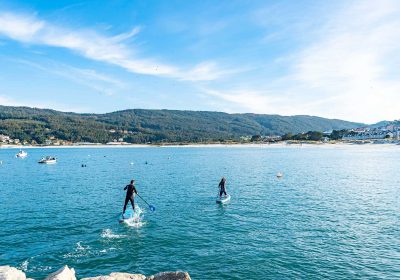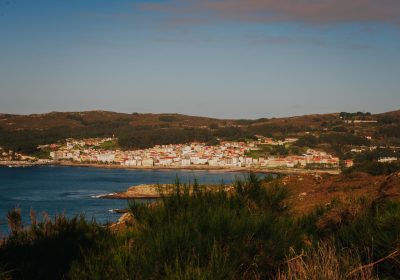What is Costa da Morte?
Discover a unique place in the world
A tourist destination full of history and natural beauty
The essence of Costa da Morte: history, legend and untamed nature
The Costa da Morte is a coastal strip in the Autonomous Community of Galicia, located in the northwest of the province of La Coruña. This territory extends over 17 municipalities, from A Laracha in the north to Carnota in the south. But what is the Costa da Morte really, and where does its mysterious name come from? The history that surrounds this place goes far beyond its geographical limits, fueled by centuries of legends and maritime tragedies.
While the name “Costa da Morte” became popular in the late 19th century, its historical roots are much older. The Romans, fascinated by the vastness and mystery of these lands, called it “the end of the world.” In their accounts, this place was inhabited by sea monsters, and the ocean represented an insurmountable danger. This mysticism has endured over the centuries, contributing to the reputation that the Costa da Morte has today.

The origin of the name "Costa da Morte"
The name “Costa da Morte” arose in a context of tragedies and superstitions, consolidating itself at the end of the nineteenth century after a series of shipwrecks that profoundly marked the history of this region. Among the most remembered are those of the Wolfstrong in 1870, the Iris Hull in 1883, the Serpent in 1890, the Trinacria in 1893 and the City of Agra in 1897. These catastrophes aroused criticism of the deficiencies of the local maritime infrastructure, especially the lack of adequate lighthouses, and fueled the black legend of peoples who were dedicated to sinking ships to loot them.
Despite these grim legends, the reality was different. The inhabitants of the Costa da Morte, far from promoting these myths, distinguished themselves for their courage and solidarity, receiving numerous recognitions for saving lives in extreme conditions. Thus, the name “Costa da Morte” began to circulate among sailors and soon reached the national and international press, immortalizing the tragic relationship between man and the sea in this region of Galicia.
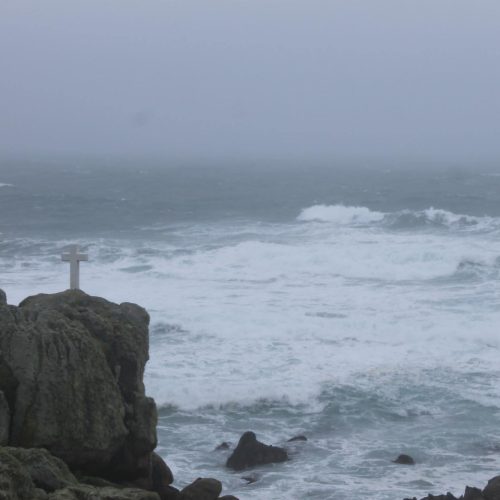
Legends and reality of the Costa da Morte
Over the centuries, the Costa da Morte has been the scene of countless legends that narrate hidden dangers in every corner. From the Middle Ages to the nineteenth century, these tales were mixed with the reality of an intricate and treacherous coastline, where sailors faced the challenges of an untamed sea. For those who dared to cross these waters, the Costa da Morte represented one of the most feared and respected places in the nautical world.
These legends, although steeped in mythology, had a basis in reality. The orography of the region, combined with the adverse conditions of the Atlantic, made the Costa da Morte a critical point for navigation, especially during the winter months. This mixture of myth and reality has created a powerful and enduring image of the Costa da Morte as a place where nature shows its most unforgiving face.
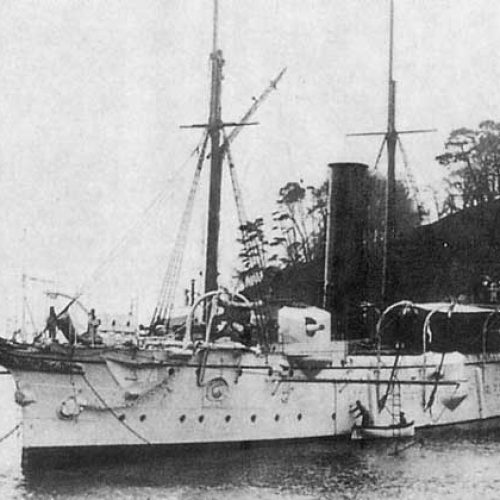
Tragedies and black legend of the Costa da Morte
The end of the 19th century witnessed a series of maritime disasters that strengthened the gloomy reputation of the Costa da Morte. The shipwrecks of several British vessels off its shores led to international scrutiny and the spread of black legends. Among them, the most persistent was the one that accused the locals of causing shipwrecks to steal the goods from the sunken ships, a myth that did not do justice to the bravery and humanity shown by the inhabitants of the region on repeated occasions.
These tragic events not only strengthened the legend, but also prompted improvements to the area’s maritime infrastructure, such as the construction of new lighthouses and improved shipping lanes. Despite adversity, the Costa da Morte has become a symbol of resilience and overcoming, where the sea remains a constant challenge, but no longer an inevitable death sentence.
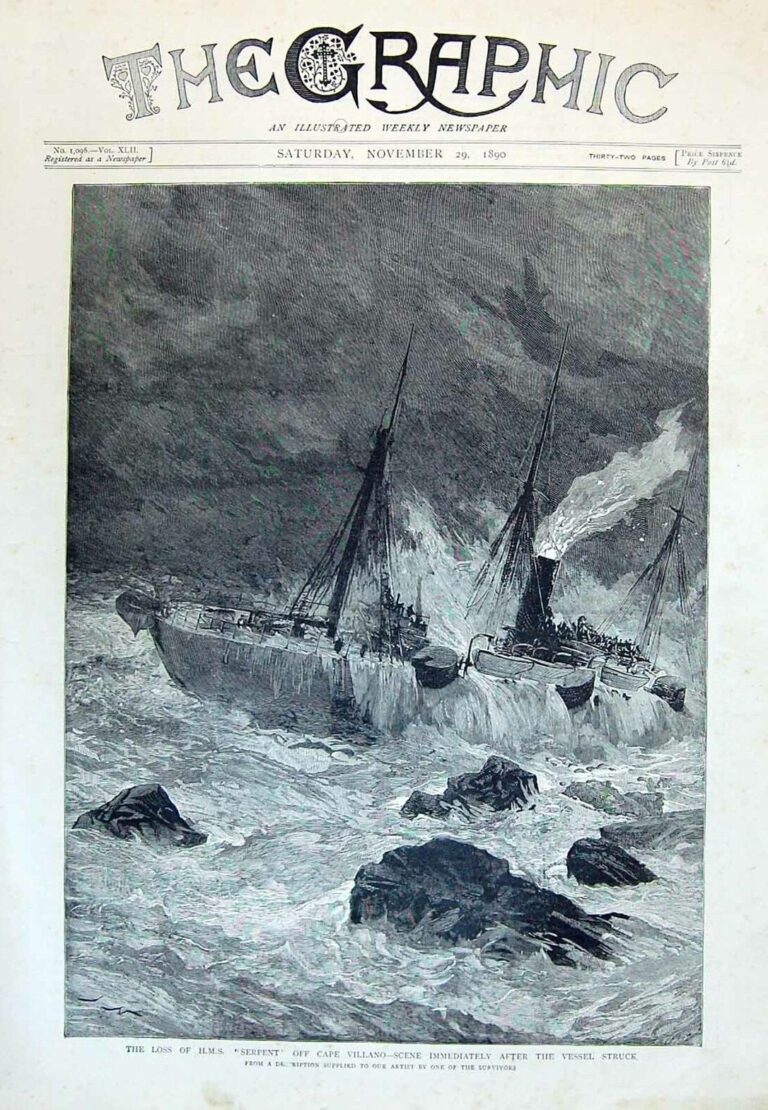
The Costa da Morte in the press and literature
The Costa da Morte soon captured the attention of the press and literature, becoming a recurring theme in the early twentieth century. In 1904, the Spanish newspaper “Noroeste” was already using the expression “Costa de la Muerte”, reflecting the growing notoriety of the region. In 1907, a map marked the site of the Serpent’s wreck with a cross and the inscription “Coast of Death.” The fame of this name was definitively consolidated in 1908 when Annette Meakin, a British travel writer, published a story that popularized the term “Coast of Death” worldwide.
Literature also contributed to the spread of the name, with authors such as Faustino Lastres, who immortalized the Costa da Morte in his verses, underlining the strength and imposing character of its rocks and seas. Through these works, the Costa da Morte settled in the collective imagination as a place of untamed beauty and hidden dangers, where history and legend are intertwined.
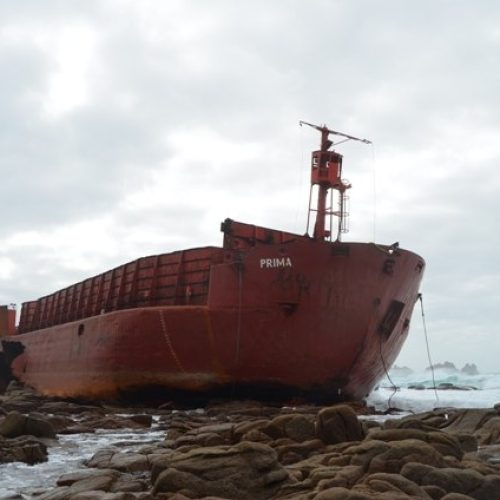
The Costa da Morte today
Today, the Costa da Morte is still a place where the sea sometimes shows its cruelest side, but technological advances and the tireless effort of its inhabitants have changed the destiny of this region. Shipwrecks, which were once common, are now part of history and not of everyday reality. However, the sea remains a constant reminder of the natural power that defines this land.
Today, the Costa da Morte is not only a place of tragic stories, but also of unparalleled beauty and rich culture. Its landscapes, its traditions and the resilience of its people have transformed this corner of Galicia into a fascinating destination, where visitors can explore a coastline full of life, history and legends that endure through time.
Discover authentic stories about the Costa da Morte on our blog.
Municipalities of the Costa da Morte
Origin of Earth, Sky, and Sea
Experience the Costa da Morte
What to see
Discover unique landscapes and historical monuments that will take your breath away.
What to do
Live unforgettable adventures with activities for all tastes and ages.
Plan your trip
We show you how to get there and how to get around on the Costa da Morte.
